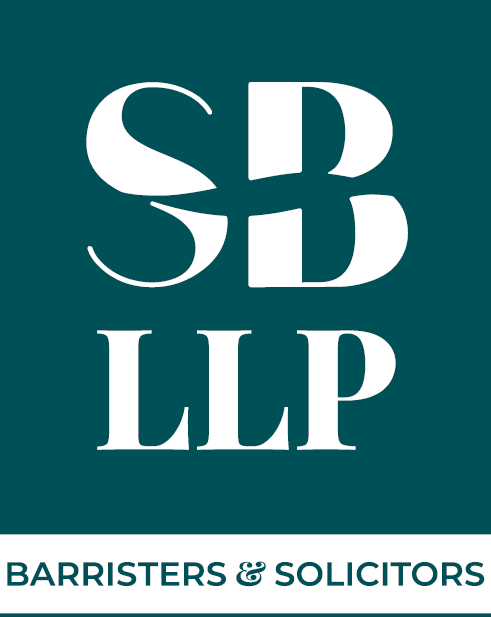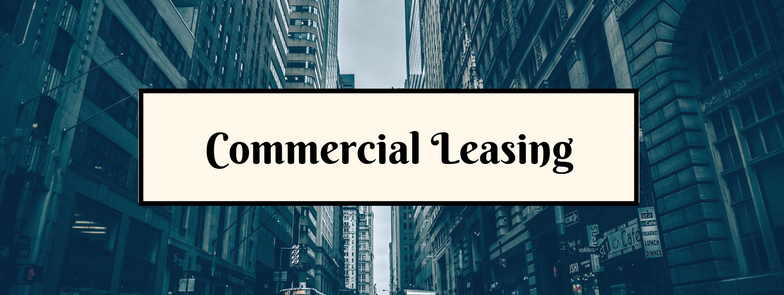Commercial Leasing 101
Written by: Roshan Kalra
Commercial leases can be among the most complicated and daunting commercial contracts. These leases are often drafted heavily in favour of landlords. While it is not possible to examine all the issues that parties should be looking out for, we highlight some common items for parties to understand when entering into either an Offer to Lease or formal Lease Agreement.
Offer to Lease
Often the precursor to a formal Lease, this should be reviewed with a Lawyer prior to signing. The Offer to Lease spells out the material terms to be contained in the formal Lease document (e.g., term, rate, options to renew, guarantees, Landlord vs Tenant work). If you sign this without legal advice, you risk ‘throwing away’ significant negotiating power on major points in a final Lease.
Gross vs. Net Lease
A gross lease involves rent that comes with a single, all-in amount that covers not just your space, but also your share of the operating costs associated with running the property --- this is rare in a typical leasing scenario
A net lease is one in which selected operating costs are paid by a tenant in addition to the base rent. These costs can include property taxes, insurance premiums, repair and maintenance costs and common area utility charges. In any given year, these charges change and fluctuate. These costs are generally charged on the proportionate share of a tenant’s space leased relative to total size of the overall property. It is important for tenants to note that structural repairs and/or replacements are typically the responsibility of landlords and should be excluded from operating costs borne by tenants in most circumstances.
Repairs
A typical commercial lease places most or all of the responsibility for repairs and maintenance on the tenant, except that the tenant’s obligations may be limited in respect of reasonable wear and tear.
Maintenance” contemplates taking steps to avoid deterioration of the building and its systems through preventative and corrective measures. Examples of maintenance might include painting, cleaning, servicing and lubricating equipment, clearing drains and gutters, and replacing light bulbs.
A “repair” contemplates damage to a portion of the premises which needs to be fixed. Obviously, anything damaged by the tenant must be repaired by the tenant. However, when a component is worn out and requires repair, a dispute may arise about whether the component is worn out due to poor maintenance or due to reasonable wear and tear despite regular maintenance.
As a landlord, you want to be able to charge replacement of mechanical systems back to a tenant, and then amortize the cost of such replacement over its useful life (e.g., roof replacement).
Condition of Unit at End of Lease
Typically, a tenant will not be required to remove any Leasehold Improvements or to restore the premises to the condition they were in prior to tenant’s occupancy. Careful attention should be noted to this requirement, as it can add significant costs or liabilities to the tenant should such requirement be present. Tenants are ordinarily entitled to remove their trade fixtures at the end of a Lease.
Hazardous Materials
The length and depth of the hazardous materials clause arises because of the complex and constantly growing body of law that now places ultimate responsibility for hazardous materials on the property owner where the material was created, used, disposed, spilled, etc.
This liability has forced numerous otherwise solvent landlords into bankruptcy through no fault of their own.
It is not only imperative that this clause not be altered, but also that the person responsible for the lease determine what kind of business the tenant is engaged in and what its past record has been with regard to hazardous materials.
Indemnity Provisions
A common provision one can expect in commercial leases states that a landlord is not liable for losses unless caused due to the Landlord’s negligence (tenants should look for tenant insurance to cover such losses).
A tenant will generally be expected to indemnify its landlord against all losses or claims arising due to the tenant’s use of the premises.
Often, a tenant will request mutual indemnification from the landlord. As a landlord, this should not be given except on a very limited basis for breach of the landlord's obligations to perform specific covenants under the lease, and the tenant's sole recourse shall be to correct the situation and/or to offset rent.
Insurance
Tenant is required to maintain certain minimal levels of insurance to ensure that the various liabilities that the tenant undertakes under the lease will have some insurance backing them up.
Most tenants will have the amounts for insurance set forth in their standard policies, with the exception of the business interruption insurance. This insurance pays the tenant for lost business if there is an incident that prevents the tenant from operating. This is important from the landlord's viewpoint because it gives some assurance that the tenant will not go out of business if such an incident occurs, and the tenant will have the ability, through insurance, to continue paying rent and other charges as they become due.
Personal Guarantee
Landlords will often want to include a guarantee provision in a Lease, whereby the principal(s) of a corporate tenant will agree to guarantee the obligations of the tenant. A tenant will look to limit the amount of the guarantee, whereas a landlord would often require an unlimited guarantee.
Tenant Improvement Allowances
In a competitive market, tenant improvement allowances are often seen as an incentive to attract tenant to a certain space. A landlord would provide for a cost allowance to construct certain improvements within a premises (can be by way of cash payment or credit towards future rent).
A prudent landlord will look to set guidelines on when and how this amount would be released (e.g., completion of work, copies of paid invoices, approval of contractors, no liens on title, etc.).
Force Majeure
In light of the disruption created by the COVID-19 pandemic, many tenants should look to include language permitting either rent deferral or forgiveness in the event of an ‘act of god’. Many leases in the past did not include pandemic/endemic as a force majeure trigger, however, moving forward, this will most certainly form part of the discussion.
Non-Disturbance Agreement
Landlords will often request subordination on a lease registered against title when obtaining financing. A tenant should seek reciprocation from the landlord through the delivery to the tenant of a Non-Disturbance Agreement from the lender requesting the subordination.
Why the need for a Lawyer?
Lawyers assist by reviewing the Offer to Lease and ensuring the tenant is not agreeing to terms which should be addressed differently within a formal Lease Agreement.
Lawyers review a formal Lease Agreement and negotiate with a landlord (or its lawyer) on material terms.
RISKS of not using a lawyer? Default can be costly. A tenant may inadvertently be prohibited from assigning their lease if not carefully drafted. A tenant may agree to terms in a formal Lease Agreement that were not bargained for, not reasonable in a leasing context, or are severely prejudicial to a tenant’s long term success.
You should speak with legal counsel prior to entering into any Offer to Lease or Lease Agreement in order to help you better understand what you are entering into. If you have any questions, please do not hesitate to contact Roshan Kalra (rkalra@sb-llp.com) at SB LLP who would be pleased to assist you:
*Disclaimer: This article is not intended to provide legal advice and is for information purposes only.

